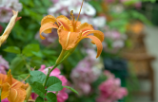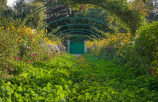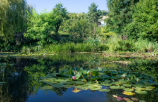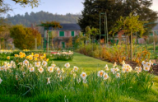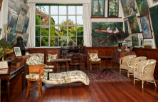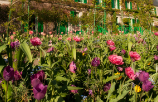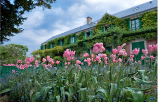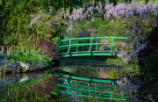Interviews
Philippe Piguet:
“Claude Monet, beyond impressionism…”
Historian and art critic Philippe Piguet, grandson of Claude Monet’s step daughter, will give a lecture in the artist’s house on 18 April, on the topic of the invention of impressionism in 1874. Enjoy a taste of what is to come…
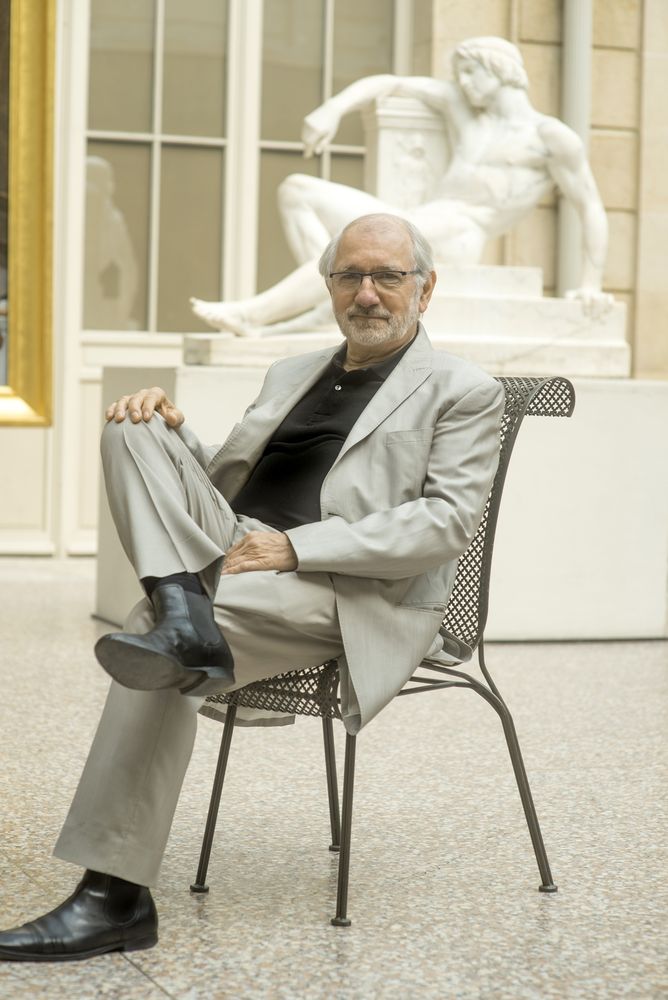
Let’s immerse ourselves in that period’s artistic context… In the late 19th century, the Académie had a tight grip on artistic production and promoted a painting style focused on religious, historical and mythological subjects. How would you describe Monet, Renoir, Sisley and the others who wanted to break out of that classical culture?
They were hungry for freedom! The demanded independence from the institution; they rose up and rebelled. The movement they launched was truly revolutionary and fundamentally innovative.
History chose the 15th of April 1874 – the date of the first impressionist exhibition – as the date the movement was born. But clearly it hadn’t come into being in one day…
No, there were definite stirrings before that! But on 15 April 1874, it burst onto the stage. In 1863, the Salon des Refusés had been held. But the artists were still far from the impressionists who would go on to truly break the mould. In 1868 there was also the Le Havre international maritime exhibition where Claude Monet exhibited and won an award. However, the Le Havre exhibition wasn’t the one headlining the news. At that time, the artistic scene was predominantly Parisian. Frustrated at their artworks being rejected by the official Salon, the artists decided to organise a fringe exhibition.
The impressionists were also the first group of modern artists to create a cooperative society…
In 1873, they published the foundation of that cooperative in Le Figaro. It was the first group created by the artists themselves! They created a means of existing despite being new on the scene, which remains true today. Nowadays, there are a huge number of artist communities and associations. Like the impressionists, they organise themselves together, find studios and run exhibitions. The impressionists started the phenomenon of associations ahead of its time!
To better understand the impressionist movement, should we evoke other advances taking place at that time?
That is what I write about all the time. The invention of paint tubes was crucial. Chevreul’s theory of the optical blending of colours was crucial. The growth of train travel was crucial. The artists were mainly from the Ile de France region but were able to travel to paint motifs thanks to the railway boom. Multiple situations converged to make this aesthetic revolution possible.
In addition to the fact that the founding painting of the impressionist movement was his, how did Claude Monet guide and lead the movement?
He was among the most active artists creating this society. He was on the board and was a driving force in this adventure. Claude Monet was seen as a rebel at the time. He had an ambition and he had an awareness of history. In fact, an awareness of history is a key aspect of Claude Monet!
How would you define impressionism yourself?
It was the first movement of avant-garde modernism! After impressionism emerged, the history of art saw a large number of other movements: symbolism, fauvism, expressionism, cubism, surrealism, dadaism and more. A plethora of innovative propositions followed the advent of impressionism.
The fifth Normandy Impressionist Festival, of which you are the curator, coincides with the 150th anniversary of this pictorial movement. What events would you like to highlight?
I had the opportunity to enjoy the David Hockney exhibition at the Musée des Beaux-Arts de Rouen. I have high hopes of the merchant town show at the Musée des Beaux-Arts de Caen. Its curator, Emmanuelle Delapierre, has a talent for great exhibitions! I’d also recommend the Musée Michel Ciry in Varangeville-sur-mer, which presents the photography and engraving work of the modern artist Raphaëlle Peria. Her work perfectly embodies the festival’s spirit of invention. That exhibition is a little gem!
Given the celebration of impressionism this year, why should people visit Claude Monet’s house and gardens?
When he moved there in 1883, it was already nine years since the first impressionist exhibition had been held. Monet had only participated in five of the seven exhibitions organised up until then. And he did not participate in the final impressionist exhibition in 1886. When Claude Monet moved into Giverny, he had already stepped back from an active role in the collective effort. He moved away from Parisian life because, within himself, he had a goal that he would gradually discover. That major goal was water lilies. If you draw a line on a map between the sites that he used as motifs, you’ll see a spiral that starts in the Giverny region before ending at the pond. In Giverny, Claude Monet undertook a solitary adventure. He was creating something that would identify him alone. His struggle would lead him beyond impressionism. It is very interesting to keep this aspect in mind when visiting Giverny.
During your lecture, how will you tackle the subject of the invention of impressionism?
What I’m interested in is highlighting the organisation of that exhibition and its utterly pioneering nature. At my second lecture on 22 May, I’ll showcase the non-religious, republican quality of impressionist iconography. And at my third lecture on 19 September, I’ll talk about it as a form of modern art!



